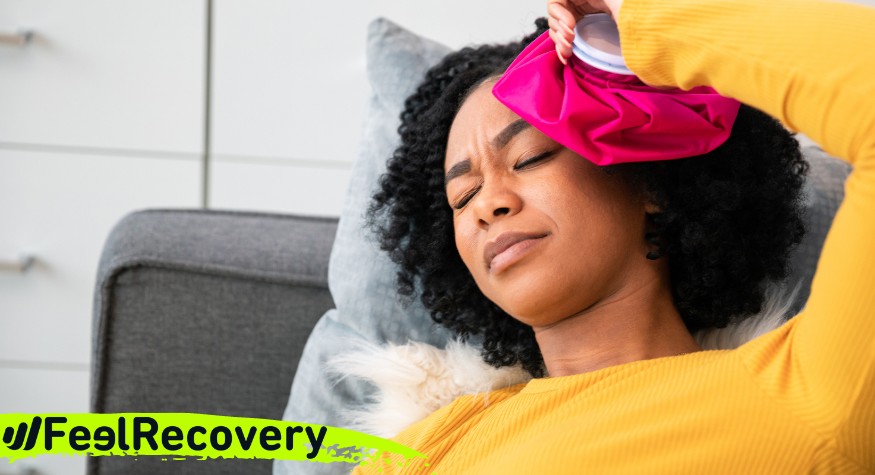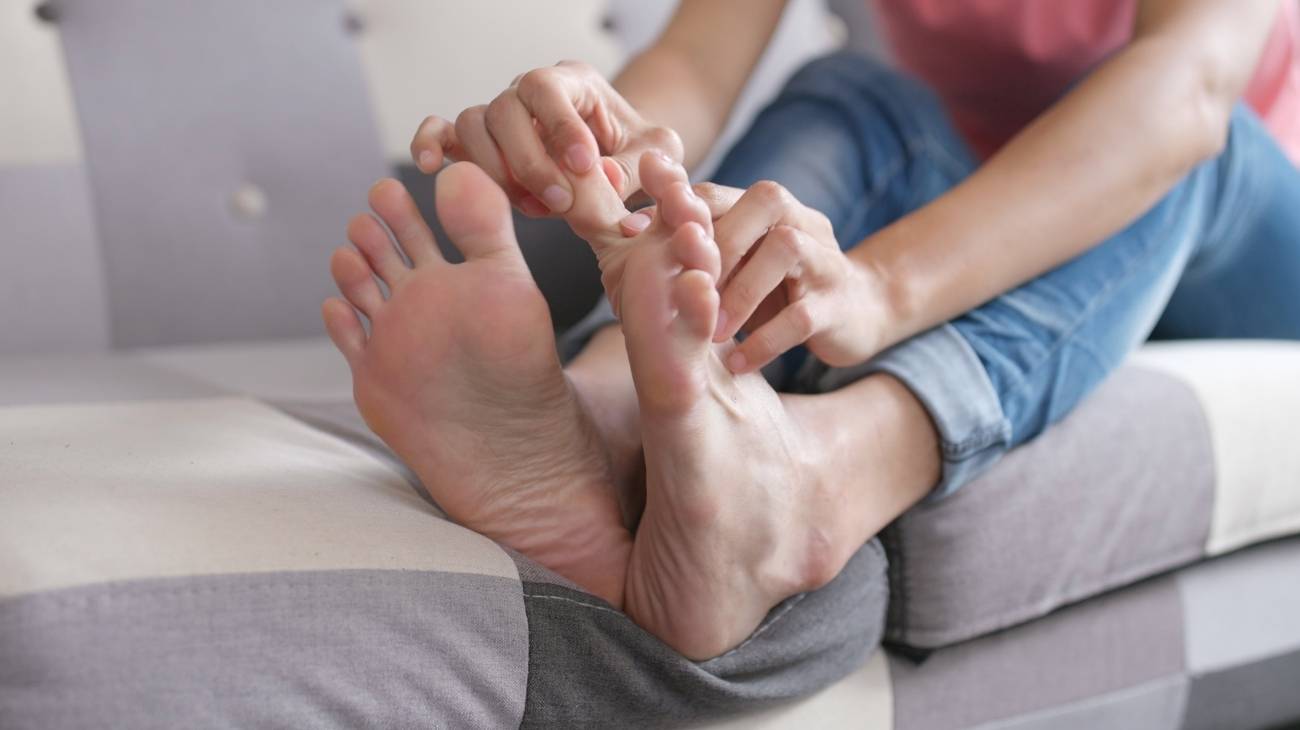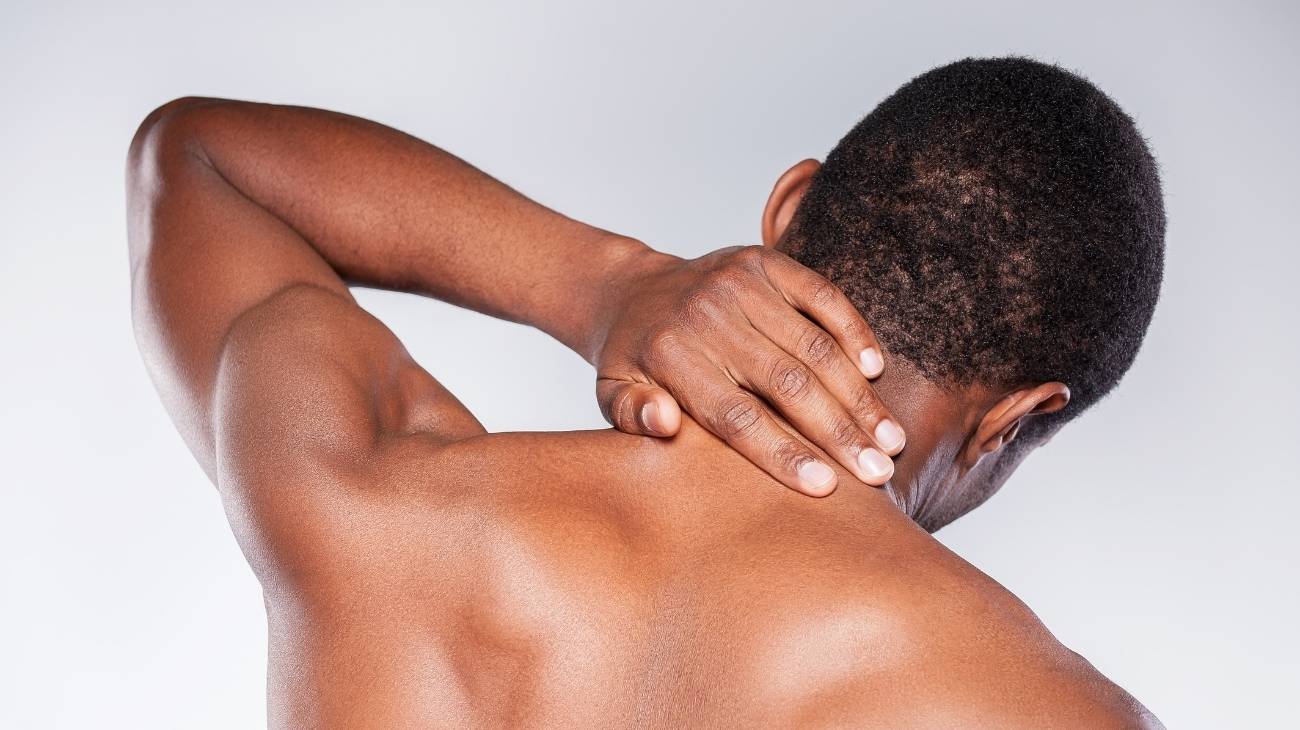Migraine pain can be debilitating and significantly reduce a person's quality of life. It is important to find the best way to relieve migraine headache pain, as this can greatly improve the patient's overall well-being and productivity. These can be accompanied by other symptoms such as nausea, vomiting and sensitivity to light and sound, which can further affect a person's daily activities.
In addition, untreated migraines can lead to chronic headaches and even depression. Finding effective relief can also help reduce the need to overuse medication, which can lead to rebound headaches. Therefore, it is critical that healthcare professionals work with their patients to develop individualized treatment plans that address not only the pain, but also the associated symptoms and underlying causes of migraines.
What is migraine and how to identify it?
Migraine is a type of headache characterized by recurrent episodes of moderate to severe headache pain that can last for hours or even days. They are usually described as throbbing or pulsating and usually affect only one side of the head. It may be accompanied by other symptoms such as nausea, vomiting and sensitivity to light and sound.
To identify migraine, health care professionals usually rely on a combination of history taking, physical examination and diagnostic tests. Patients often report a family history of the disease and may have a history of similar headache episodes.
During the physical examination, the physician may look for signs of other neurological conditions and perform tests to evaluate vision and reflexes. Diagnostic tests such as magnetic resonance imaging (MRI) or computed tomography (CT) may be ordered to rule out other possible causes of the headache.
In general, identification of migraine depends on careful evaluation and collaboration between the patient and the healthcare professional to ensure accurate diagnosis and effective treatment.
Here are some statistics about migraine headaches:
- Migraines affect approximately 1 billion people worldwide, making them one of the most common neurological disorders.
- In the United States, approximately 12% of the population suffers from migraines.
- They are three times more common in women than in men, and tend to run in families.
- The minimum age of onset for migraines is 30 years, but they can affect people of all ages, including children.
- They are the sixth most disabling disease in the world, according to the World Health Organization.
- They cost the U.S. economy about $36 billion a year in healthcare costs and lost productivity.
- Chronic migraines (defined as headaches for 15 or more days a month) affect approximately 2% of the population.
- Migraine sufferers are also more likely to suffer from depression, anxiety and other psychiatric disorders.
Best products for migraine pain relief
Bestseller
-
Gel Eye Mask for Puffy Eyes (Gold/Black)
£9,95 -
Gel Eye Mask for Puffy Eyes (Orange/Pink)
£9,95 -
Gel Eye Mask for Puffy Eyes (Purple/Turquoise)
£9,95 -
Microwave Wheat Bag for Neck & Shoulder Pain Relief (Hearts)
£24,95 -
Microwave Wheat Bag for Neck & Shoulder Pain Relief (Oxford)
£24,95 -
Microwave Wheat Bag for Neck & Shoulder Pain Relief (Sport)
£24,95 -
Microwave Wheat Bag for Neck Pain Relief (Hearts)
£20,95 -
Microwave Wheat Bag for Neck Pain Relief (Oxford)
£20,95 -
Microwave Wheat Bag for Neck Pain Relief (Sport)
£20,95
What are the most common types of migraines?
There are several types, each with unique characteristics and symptoms. Here are some of the most common types and their descriptions:
- Migraine without aura (common migraine): This is the most common type and affects approximately 80% of patients. It is characterized by moderate to severe headache pain, usually on one side of the head, along with nausea, vomiting, and sensitivity to light and sound.
- Migraine with aura (classic migraine): This type is characterized by specific neurological symptoms that appear before the headache. They may include visual disturbances, such as flashes of light or blind spots, or other sensory symptoms such as tingling or numbness in the face or hands. The headache is usually severe and may last for several hours.
- Menstrual migraine: This type is triggered by hormonal changes that occur during a woman's menstrual cycle. It can occur before, during or after menstruation and can be more severe than other types of migraine.
- Equivalent migraine: This type is characterized by neurological symptoms that mimic a stroke or seizure, but without permanent damage. These symptoms may include confusion, weakness on one side of the body and slurred speech.
- Complicated migraine: This type is characterized by neurological symptoms that last longer than typical migraine symptoms and may include confusion, paralysis and loss of consciousness.
- Abdominal migraine: This type is characterized by severe abdominal pain, nausea and vomiting. It is more common in children than in adults and may be triggered by stress or food allergies.
What are the causes of migraine?
The exact causes are not fully understood, but research suggests that it is probably due to a combination of genetic and environmental factors. Here are some of the known triggers that can cause them in susceptible individuals:
- Hormonal changes: fluctuations in estrogen levels can trigger migraines in women. Many women suffer from this pathology during their menstrual cycles or pregnancy.
- Foods and beverages: Certain foods and beverages can trigger migraines, especially in prone individuals. Common culprits are chocolate, cheese, alcohol and foods containing monosodium glutamate (MSG) or nitrites.
- Sleep patterns: Changes in sleep patterns or lack of sleep can affect. Sleeping too much or too little, or changing sleep schedules, can be problematic.
- Environmental factors: Bright lights, loud noises, and strong odors. Some people are also sensitive to changes in temperature or barometric pressure.
- Stress and anxiety: Emotional stress, anxiety and tension. Learning stress management techniques can help reduce the likelihood of migraines.
- Weather changes: Weather changes, such as changes in temperature or barometric pressure, can cause headaches in some people.
- Medications: Some medications, such as oral contraceptives and vasodilators. Talk to your doctor if you suspect your medication is contributing to your migraines.
- Physical activity: Strenuous or strenuous physical activity. Exercise can be beneficial for patients, but it is important to start slowly and gradually increase the intensity.
- Head or neck trauma: A history of head or neck trauma may increase the risk. Seek medical attention if you suffer head or neck trauma.
- Diseases: Certain medical conditions, such as hypertension, a history of stroke or a family history of migraines, may increase your risk. Talk to your health care professional if you have questions about your medical history.
What are the best ways to relieve and prevent migraine?
There are several scientifically proven methods to relieve and prevent migraines. Here are some of the most effective methods:
1 - Water
Hydration is essential in the treatment and prevention of migraines. Dehydration decreases blood volume, which causes dilation of blood vessels in the brain and triggers migraines. It also contributes to electrolyte imbalances, which can worsen migraine symptoms.
Drinking sufficient amounts of water throughout the day can prevent dehydration and decrease the frequency and severity of migraines. It is important to remember that each person's hydration needs differ depending on age, gender and activity level. In addition, consuming fluids containing electrolytes, such as sports drinks or coconut water, can also help prevent dehydration and reduce the risk.
Eating foods with high water content, such as fruits and vegetables, can also help maintain hydration. Overhydration can also lead to hyponatremia, a condition that can cause headache, nausea and confusion, which can be mistaken for migraine symptoms. It is important to maintain fluid and electrolyte balance to prevent both dehydration and hyponatremia.
2 - Magnesium
Magnesium is an important mineral that plays a key role in the body, including in the treatment and prevention of headaches. It helps regulate neurotransmitters, which are chemicals that transmit signals between nerve cells in the brain. Low magnesium levels have been associated with an increased risk of this disease, and taking magnesium supplements has been shown to be an effective treatment.
Magnesium helps relax blood vessels in the brain. It may also help reduce inflammation, which is believed to play a role in the development of migraine headaches. In addition, magnesium has been shown to help relieve symptoms such as nausea and sensitivity to light and sound.
It is important to note that magnesium supplements may not be effective for everyone and the optimal dosage may vary from person to person. It is best to consult with a healthcare professional before starting any new supplement regimen. In addition to supplements, magnesium can also be obtained through a balanced diet that includes magnesium-rich foods such as green leafy vegetables, nuts and whole grains.
3 - Cold compresses
Cold compresses can be a very effective tool. Applying a ice gel packs to the head or neck can help reduce inflammation and constrict blood vessels, which can relieve pain and other associated symptoms. The cold temperature can also help numb the area and provide a soothing sensation.
Cold gel-filled packs are especially effective in the treatment of migraines with aura, as they can help reduce the visual disturbances often associated with this type. They can also be useful in reducing nausea and vomiting.
It is important to note that while cold compresses can be helpful in treating migraines, they may not be effective for everyone. In addition, applying cold compresses for prolonged periods of time may cause skin irritation or frostbite. It is recommended to use cold compresses for 10-15 minutes at a time, and avoid placing the compress directly on the skin. Instead, wrap the compress in a towel or cloth before applying it to the affected area.
4 - Yoga
Yoga, relaxation techniques and meditation can be beneficial for treatment and prevention. These techniques can help reduce stress and tension in the body, which can be the main triggers. By reducing stress and tension, these techniques can also help improve sleep quality, which is important for treatment.
Yoga and other physical activities can also help improve circulation and promote relaxation, which can relieve pain and other associated symptoms. Certain yoga postures, such as forward folds and inversions, can also help increase blood flow to the brain and reduce swelling.
Meditation and other mindfulness practices can be helpful in reducing stress and promoting relaxation. By practicing mindfulness, people with migraines can learn to recognize early signs and take steps to prevent a full-blown attack. Meditation can also help reduce the intensity and duration when they occur.
5 - Diet
Diet and good nutrition can play an important role. Certain foods and beverages are known to promote migraines in some people, such as caffeine, alcohol and processed foods. By avoiding these triggers and incorporating more nutrient-rich foods into the diet, people may suffer fewer and less severe attacks.
Some nutrients have also been shown to be beneficial. For example, magnesium has been found to help reduce the frequency and intensity of migraines. Foods rich in magnesium include green leafy vegetables, nuts, seeds and whole grains. Riboflavin (vitamin B2) has also been found to help reduce the frequency of these annoying headaches and can be found in dairy products, eggs and green leafy vegetables.
In addition to avoiding triggers and incorporating nutrient-rich foods, it is also important to maintain regular meal times and avoid skipping meals, as low blood sugar levels can be detrimental.
6 - Massage
Massage therapy can be a useful complementary therapy. Massage therapy can help reduce stress and tension in the body. By reducing stress and tension, massage therapy can also help improve sleep quality.
Certain massage techniques, such as trigger point therapy and myofascial release, can help release muscle tension and reduce pain. Massage therapy can also help improve circulation and reduce inflammation, which can further relieve symptoms.
In addition to reducing the frequency and intensity of migraines, massage therapy can also help improve overall quality of life. Studies have shown that regular massage therapy can help reduce anxiety, depression and overall stress levels.
7 - Biofeedback
Biofeedback is a non-invasive therapy that can be effective in managing migraines. Biofeedback therapy involves the use of sensors to measure certain bodily functions, such as heart rate, muscle tension and skin temperature, and provide feedback to help the individual learn to control these functions.
Studies have shown that biofeedback therapy can be effective in reducing the frequency and intensity of migraine headaches. By learning to control certain bodily functions, such as muscle tension, individuals can better control symptoms.
Biofeedback therapy can also help reduce stress and anxiety. During a biofeedback session, the person works with a therapist to learn relaxation techniques and control body functions. The therapist provides feedback on the measurements taken by the sensors and helps the person adjust his or her techniques as needed.
8 - Acupuncture
Acupuncture and acupressure are alternative therapies that can help relieve pain. Acupuncture involves inserting fine needles into specific points on the body, while acupressure involves applying pressure to those same points with the fingers, hands or special tools.
Research has shown that acupuncture and acupressure can be effective in reducing the frequency and intensity of migraines. It is believed that these therapies work by stimulating the release of natural pain-relieving chemicals in the body, as well as improving blood flow and reducing muscle tension.
In addition to reducing frequency and intensity, acupuncture and acupressure can also help relieve other associated symptoms, such as nausea and sensitivity to light and sound.
9 - Rest
Rest and sleep are important components of a treatment plan, as they can help relieve headache pain and reduce its frequency. Many people report that fatigue and lack of sleep can trigger a headache.
During sleep, the body has the opportunity to rest and repair itself. It is during this time that the body produces hormones and chemicals that are important for overall health and well-being. Rest and sleep also help reduce stress.
It is important to establish a regular sleep schedule and make sure you get enough rest each night. This may involve lifestyle changes, such as reducing caffeine intake and avoiding electronic devices before bedtime.
In addition, taking breaks throughout the day to rest and relax can also help reduce the severity of migraines. Some people may benefit from taking short naps during the day or practicing relaxation techniques such as deep breathing or meditation.
10 - Managing stress
Stress is a common cause of migraines, and managing stress is an important component of a treatment plan. When we experience stress, our body releases hormones that can cause physical tension, which in turn can trigger a headache.
Stress management techniques can help reduce tension and promote relaxation. Techniques such as deep breathing, meditation, yoga and progressive muscle relaxation can be effective ways to manage stress.
Cognitive behavioral therapy (CBT) is also a useful technique for managing stress. CBT can help people identify negative thought patterns and develop coping strategies to manage stress and prevent migraines.
In addition to stress management techniques, it is important to establish healthy lifestyle habits, such as exercising regularly, getting enough sleep and maintaining a healthy diet, to help manage stress and reduce the risk of headaches.
11 - Migraine relief cap
Headache reduction caps are an innovative, non-invasive device that can help relieve migraine pain. These caps are designed to provide cooling therapy to the head, which can help reduce inflammation and relieve migraine symptoms.
The cap cools the affected area, which can help constrict blood vessels and reduce the sensation of pain. The cap can be worn for up to 30 minutes at a time and can be reused several times, making it an economical and comfortable option for migraine sufferers.
One of the advantages of the anti-migraine cap is that it is a drug-free alternative to traditional migraine treatments. This can be particularly important for people who cannot take prescription medications or who prefer to avoid medications whenever possible.
12 - Ginger
Ginger is a popular natural remedy for headaches. It contains several bioactive compounds with anti-inflammatory and analgesic properties, making it a potential option for treating migraines. Ginger can inhibit the release of certain chemicals in the body that promote inflammation and pain, and can also block the activation of pain pathways in the brain.
A study published in Phytotherapy Research found that taking powdered ginger reduced the intensity and duration of migraines in one group of participants compared to a placebo group. Another study published in Cephalalalgia found that taking a combination of ginger and feverfew was more effective than a placebo in reducing frequency and intensity.
Ginger can be consumed in various forms, such as tea, capsules or fresh ginger root. It is important to consult a healthcare professional before using ginger as a treatment, especially if you are taking medication or have other medical conditions. Although ginger is generally considered safe, it can cause side effects such as gastrointestinal discomfort in some people.
13 - Vitamins
Vitamins play an important role in maintaining a healthy body and reducing the risk of various health problems, including migraines. In particular, studies have shown that certain vitamins can help relieve symptoms and prevent future attacks.
- Vitamin B2 (riboflavin) is an important nutrient that has been shown to reduce the frequency and duration of migraine attacks. Vitamin B6 may also help reduce the severity and prevent nausea and vomiting.
- Vitamin D deficiency has also been linked to an increased risk of migraines. Taking vitamin D supplements may help prevent migraines, especially in people with a history of vitamin D deficiency.
- Magnesium is another important nutrient that can help reduce the frequency and severity. Many people have low magnesium levels, and taking magnesium supplements can help reduce the number of attacks.
It is important to talk to your doctor before you start taking vitamin supplements, as taking too many vitamins can be harmful. A balanced diet that includes plenty of fruits, vegetables and whole grains can also provide the vitamins needed to prevent migraines.
14 - Herbs
There are several herbs that have been used traditionally, and some have been shown to be effective in scientific studies. For example, feverfew is an herb that has been used for centuries to treat headaches and migraines. It contains a compound called parthenolide that has anti-inflammatory properties and may help prevent the constriction of blood vessels that can trigger migraines.
Another herb that has been studied for its pain-relieving properties is butterbur. Butterbur contains compounds called butterbur and isopetasin that have been shown to have anti-inflammatory and vasodilatory effects, which may help reduce pain.
Finally, peppermint oil is another herb that has been shown to have some beneficial properties. It contains menthol, which can help relax muscles and relieve tension.
15 - Essential oils
Essential oils have been used for centuries to treat various ailments, including headaches and migraines. They are derived from plants and have unique therapeutic properties that can help relieve pain and other symptoms. Essential oils can be used in a variety of ways, such as inhaling their aroma, applying them topically or using them in a diffuser.
Some essential oils that have proven effective in treatment are peppermint oil, lavender oil and rosemary oil.
- Peppermint oil has a cooling effect that can help reduce the pain and inflammation associated with migraines.
- Lavender oil has a calming effect that can help reduce stress and anxiety, common triggers.
- Rosemary oil has analgesic and anti-inflammatory properties that can help relieve pain and reduce inflammation.
Although essential oils can be effective in the treatment of migraines, it is important to use them safely and with caution. Some essential oils may cause allergic reactions or interact with medications, so it is important to consult a healthcare professional before using them.
How can migraine be relieved by complementary therapies without medication?
Complementary and alternative therapies are often used in conjunction with traditional treatments to reduce the frequency and severity of migraines. Although the scientific evidence for some of these therapies is limited, some people with migraine find them helpful.
Some of the best complementary or alternative therapies are:
- Massage therapy: massage therapy can help relax muscles, reduce stress and improve blood flow, all of which can help reduce pain.
- Cold therapy: Also known as cryotherapy, this is a commonly used complementary therapy. Applying a cold pack or ice pack to the head or neck can help reduce inflammation and constrict blood vessels, which can help relieve pain and other associated symptoms.
- Chiropractic care: Chiropractic care can help relieve tension in the neck and spine, which can contribute to migraine headaches.
- Essential oils: Certain essential oils, such as lavender and peppermint, can help reduce severity when applied topically or diffused into the air.
- Yoga or meditation: Yoga can help improve flexibility, reduce stress and improve circulation, which can aid in prevention.
- Acupressure: Acupressure involves applying pressure to specific points on the body to relieve pain and tension, and can be effective in reducing its severity.
- Mind-body therapies: Mind-body therapies, such as meditation, hypnosis and guided imagery, can help reduce stress and anxiety, which are common triggers for migraines.
- Acupuncture: Acupuncture involves the insertion of small needles into specific points on the body, and has been shown to be effective in reducing frequency and severity in some people.
- Biofeedback: Biofeedback is a technique that uses electronic devices to monitor bodily functions such as heart rate, blood pressure and muscle tension, and teaches people to control these functions to reduce stress and tension.
- Transcutaneous electrical nerve stimulation (TENS): TENS involves the use of low-voltage electrical currents applied to specific points on the body, and has been shown to be effective in reducing the frequency and severity of migraines in some people.
- Cognitive behavioral therapy (CBT): CBT is a type of psychotherapy that focuses on changing negative thought patterns and behaviors, and can help people with migraines better cope with the stress and anxiety that can trigger them.
- Herbal remedies: Some herbal medicines, such as feverfew and butterbur, have been shown to be effective in reducing frequency and intensity in some people.
References
- Sauro, K. M., & Becker, W. J. (2009). The stress and migraine interaction. Headache: The journal of head and face pain, 49(9), 1378-1386. https://headachejournal.onlinelibrary.wiley.com/doi/full/10.1111/j.1526-4610.2009.01443.x
- May, A., & Schulte, L. H. (2016). Chronic migraine: risk factors, mechanisms and treatment. Nature Reviews Neurology, 12(8), 455-464. https://www.nature.com/articles/nrneurol.2016.93
- Lipton, R. B., Diamond, S., Reed, M., Diamond, M. L., & Stewart, W. F. (2001). Migraine diagnosis and treatment: results from the American Migraine Study II. Headache: The Journal of Head and Face Pain, 41(7), 638-645. https://headachejournal.onlinelibrary.wiley.com/doi/full/10.1046/j.1526-4610.2001.041007638.x
- Kruit, M. C., van Buchem, M. A., Hofman, P. A., Bakkers, J. T., Terwindt, G. M., Ferrari, M. D., & Launer, L. J. (2004). Migraine as a risk factor for subclinical brain lesions. Jama, 291(4), 427-434. https://jamanetwork.com/journals/jama/article-abstract/198090
- Silberstein, S. D. (1995). Migraine symptoms: Results of a survey of self‐reported migraineurs. Headache: The Journal of Head and Face Pain, 35(7), 387-396. https://europepmc.org/article/med/11089517
- Rasmussen, B. K. (1995). Epidemiology of headache. Cephalalgia, 15(1), 44-67. https://journals.sagepub.com/doi/abs/10.1046/j.1468-2982.1995.1501045.x
- Sauro, K. M., & Becker, W. J. (2009). The stress and migraine interaction. Headache: The journal of head and face pain, 49(9), 1378-1386. https://headachejournal.onlinelibrary.wiley.com/doi/abs/10.1111/j.1526-4610.2009.01486.x
- Breslau, N., Lipton, R. B., Stewart, W. F., Schultz, L. R., & Welch, K. M. A. (2003). Comorbidity of migraine and depression: investigating potential etiology and prognosis. Neurology, 60(8), 1308-1312. https://n.neurology.org/content/60/8/1308.short
- Cady, R. K. (1999). Diagnosis and treatment of migraine. Clinical cornerstone, 1(6), 21-32. https://www.sciencedirect.com/science/article/abs/pii/S1098359799900376
- Stewart, W. F., Lipton, R. B., Celentano, D. D., & Reed, M. L. (1992). Prevalence of migraine headache in the United States: relation to age, income, race, and other sociodemographic factors. Jama, 267(1), 64-69. https://jamanetwork.com/journals/jama/article-abstract/394233














































